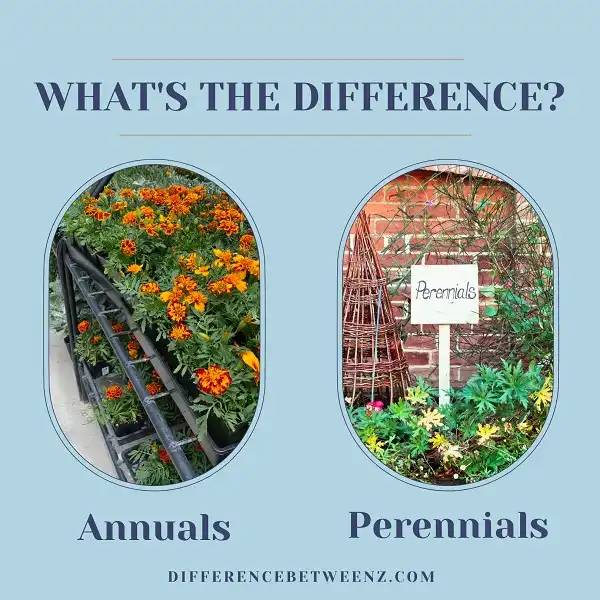There is a big difference between annuals and perennials when it comes to gardening. Annuals are plants that live for one growing season, while perennials come back year after year. Which type of plant you choose to grow in your garden will depend on your climate, the amount of sunlight your garden receives, and your gardening goals.
What are Annuals?
Annual plants are those that complete their life cycle in one year or less and then die. Annuals typically need to be replanted each year, as they will not flower or produce seed the following year if left in the ground. Annuals can be further divided into two groups: summer annuals and winter annuals. Summer annuals are planted in the spring and bloom during the summer months. Winter annuals are planted in the fall and bloom during the spring. Annuals can provide a burst of color to any garden and are often used to fill in gaps between perennials.
What is Perennials?
Perennials are a type of plant that lives for more than two years. They typically have deep roots and thick stems that help them to withstand heavy rains and strong winds. Perennials can be either deciduous or evergreen, meaning that they can lose their leaves in winter or keep them year-round. Some popular examples of perennials include roses, lilies, and daffodils.
Perennials are a key part of any garden, as they provide structure and interest throughout the year. When choosing perennials for your garden, it is important to consider the climate and the amount of sunlight that the plants will receive. Perennials can be an easy way to add color and beauty to your yard, and with proper care, they will bloom beautifully year after year.
Difference between Annuals and Perennials
- Annual plants live for only one growing season, while perennials live for two or more. Annuals must be replanted each year, while perennials come back on their own. Annuals are often used as annual accents in perennial gardens. Annuals are started from seeds, transplants, or divisions taken from other plants. Annual plants include impatiens, marigolds, petunias, zinnias, and cosmos. Perennials can be started from seeds, divisions, or transplants. P
- perennials include daylilies, phlox, black-eyed Susans, coneflowers, and ornamental grasses. Some plants, such as Shasta daisies and some types of salvias, behave as annuals in cold climates and as perennials in warm climates.
- Annuals are easier to grow from seed than perennials. Most annual seeds need warm temperatures to germinate; so they are started indoors and transplanted outdoors after the last frost date. Perennial seeds may also require special treatment such as cold stratification before they will germinate. Annuals generally bloom profusely all season long if they are deadheaded (removing spent flowers).
Conclusion
Annual plants are those that complete their entire life cycle in one year. They germinate, grow, flower, and set seeds all within 365 days. Perennials live for more than two years and typically die back to the ground in winter before returning again in the spring. The distinction between annuals and perennials is an important one for gardeners because it affects when you plant them, how you care for them, and how long they will last.


